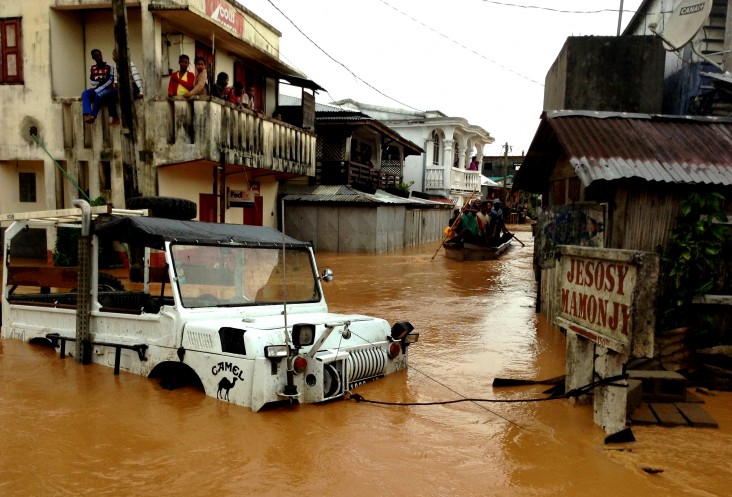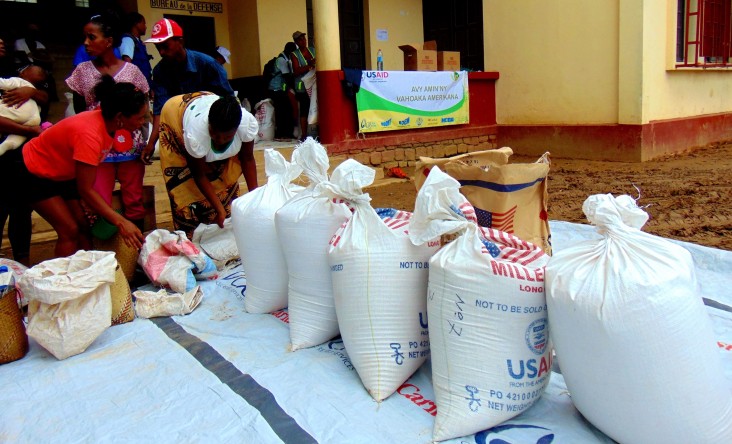
On Wednesday, March 8th the powerful cyclone Enawo drove straight through the heart of Madagascar, bringing torrential rains and howling winds up to 300 km/hour to batter the island nation. By many accounts it was Madagascar’s strongest cyclone in 13 years. Communities along the northeastern coast, where Enawo made landfall, were the hardest hit, but heavy and constant rains unleashed widespread flooding as the storm carved a trail south along the spine of the island.
In Brickaville, a large town on the edge of the eastern rainforest, the rivers rose so rapidly that people had to abandon their homes in the midst of the storm to flee to higher ground. Though there were no deaths in Brickaville, Cyclone Enawo exacted a heavy toll: over 650 homes were totally destroyed and hundreds of families have been forced to seek shelter in temporary centers. Although the town straddles the National Road 2, the major artery connecting the capital of Antananarivo to the coastal port city of Toamasina, landslides and flood debris have cut the road in several locations, making it hard for emergency relief to reach the area.
Brickaville is home to a food warehouse used by Catholic Relief Services as part of a USAID funded food security project called Fararano, which works along the east coast as well as the southwest of Madagascar. Having the food warehouse on location allowed Catholic Relief Services to respond quickly and provide food to those in need. 25 tonnes of food will be used to feed 800 families, cast out of their homes by the cyclone, for the next month.
On Monday, Catholic Relief Services began distributing food to those in need in Brickaville. Over the course of the week food supplies, including rice, beans and oil, will also start reaching people in remote, hard-to-reach communities, some located over 50 kilometers away from town. A portion of the emergency relief will be tailored to meet the specific nutritional needs of pregnant and lactating mothers and young children, two of USAID’s primary targets for development assistance.

“Unfortunately Madagascar is an island that is accustomed to bearing the brunt of these ferocious storms and extreme weather, like the serious drought that the south of Madagascar has been enduring for the past three years,” said Carrie Antal, head of USAID’s Food Security and Disaster Assistance Office in Madagascar. “Communities, the government of Madagascar and development partners like USAID have to stand ready to respond, and we never know which communities will be hardest hit. This is a case where we have been able to respond very quickly and start helping people just days after the storm.”
The Fararano project helps reduce stunting by providing nutritional education and supplements; teaching people better ways to maintain their health, cleanliness and good sanitation; and developing better livelihoods options to raise living standards in vulnerable rural communities. The project also provides disaster preparedness and response training to improve community members’ resilience to natural disasters like floods and cyclones. As cyclone Enawo battered towns up and down the east coast, many communities used the disaster response training provided through the USAID Fararano project to take smart actions that helped save lives.







Comment
Make a general inquiry or suggest an improvement.